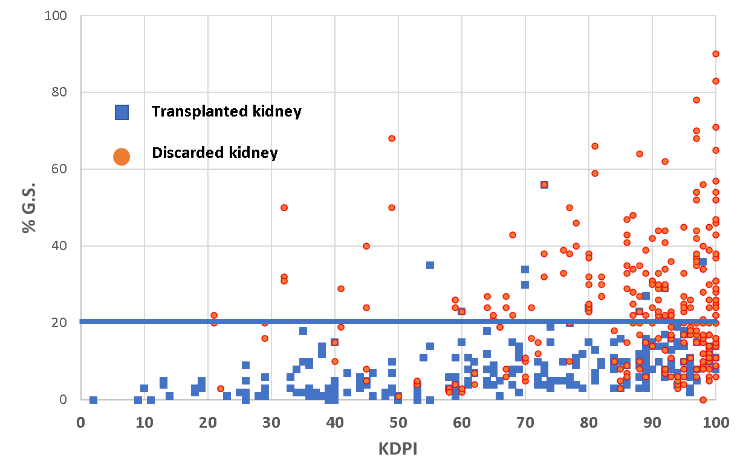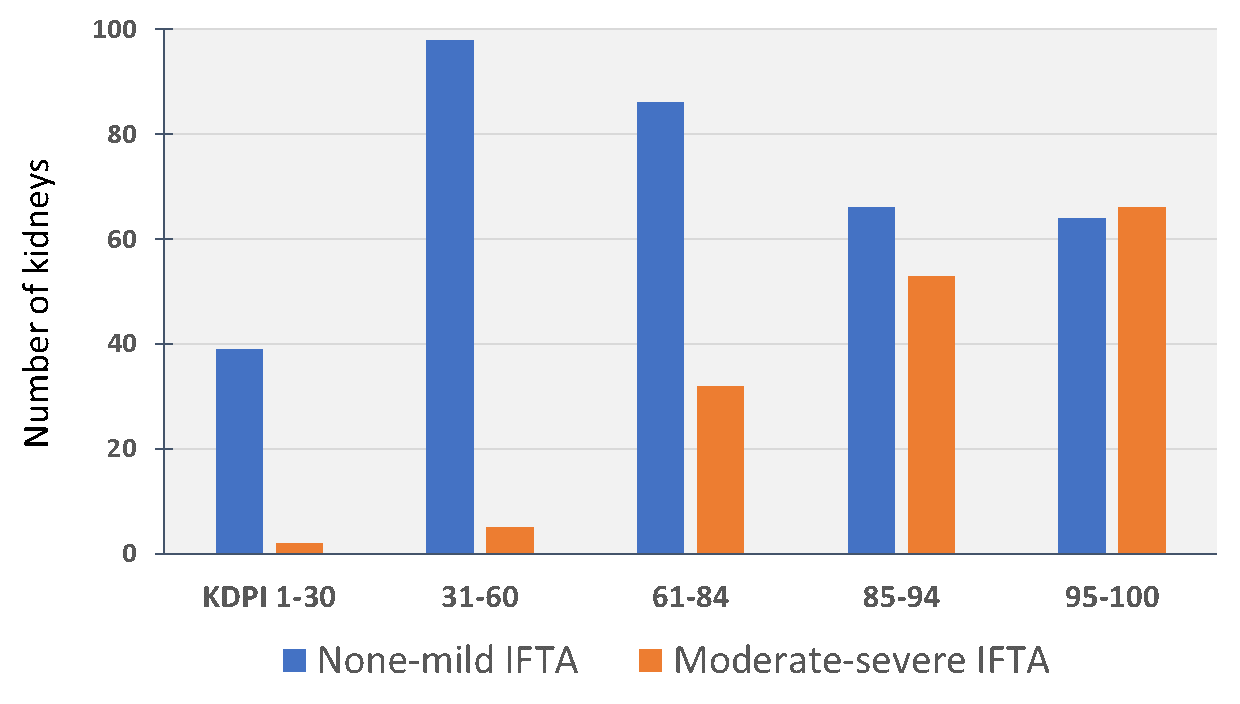Biopsy Characteristics of Kidneys from a Single Large OPO
1David Geffen School of Medicine, Los Angeles, CA, 2One Legacy, Los Angeles, CA
Meeting: 2022 American Transplant Congress
Abstract number: 751
Keywords: Biopsy, Donors, marginal, Organ Selection/Allocation
Topic: Clinical Science » Kidney » 32 - Kidney Deceased Donor Selection
Session Information
Session Name: Kidney Deceased Donor Selection
Session Type: Poster Abstract
Date: Saturday, June 4, 2022
Session Time: 5:30pm-7:00pm
 Presentation Time: 5:30pm-7:00pm
Presentation Time: 5:30pm-7:00pm
Location: Hynes Halls C & D
*Purpose: As deceased donor pool have expanded, kidney biopsy has been increasingly used to help determine organ suitability for transplant. There are concerns that biopsy is overused, does not accurately predict outcomes, and cause excessive kidney discard. We reviewed biopsies performed in our OPO to assess their role in decisions to use or discard kidneys, whether biopsies are being overused, and if so, if overuse is a factor in increasing discard.
*Methods: Kidney biopsies were performed on 531 kidneys in 2019, 52% of the 1,019 kidneys procured in OneLegacy’s service area. To determine whether clinical parameters alone could predict which kidneys would have unfavorable biopsies, biopsy results were compared with KDPI.
*Results: Of 740 kidneys transplanted, 265 underwent biopsy; of 279 kidneys discarded, 266 underwent biopsy. Table 1 shows impact of glomerulosclerosis (GS) and interstitial fibrosis (IFTA). Only 12 kidneys were transplanted with either GS > 20 or moderate to greater IFTA. Figures 1 & 2 show relationship between KDPI GS & IFTA.
*Conclusions: 1) Biopsy findings were a significant factor in 2/3 of kidney discards. 2) GS > 20 and moderate to severe IFTA are the de facto standard of care to not transplant. 3) It is not possible to predict which kidneys will have significant sclerosis and fibrosis with KDPI >30. KDPI 30-90 have a significant chance of having severe sclerosis and fibrosis, while KDPI 90-100 have a significant chance of having little sclerosis or fibrosis. With the donor pool in Southern California, kidney biopsy is a necessary tool for evaluating kidney usability. 4) KDPI <30 yielded only 1 unfavorable biopsy. Biopsy in donors with KDPI <30 could lead to unnecessary discards. 5) Both kidneys were biopsied in 2/3 of donors, 92% of these had concordant findings between kidneys. Consideration should be made to routinely biopsy only 1 kidney per donor.
| Transplants | Discards | Risk of Discard | |
| G.S. < 20; IFTA < moderate | 253 | 103 | 29% |
| Biopsy with G.S. > 20 | 4 | 141 | 97% |
| Biopsy with IFTA Moderate-severe | 8 | 148 | 95% |
| Both | 0 | 115 | 100% |
To cite this abstract in AMA style:
Bunnapradist S, Seto T, Cohen A, Rosenthal T, Danovitch G. Biopsy Characteristics of Kidneys from a Single Large OPO [abstract]. Am J Transplant. 2022; 22 (suppl 3). https://atcmeetingabstracts.com/abstract/biopsy-characteristics-of-kidneys-from-a-single-large-opo/. Accessed December 24, 2025.« Back to 2022 American Transplant Congress


